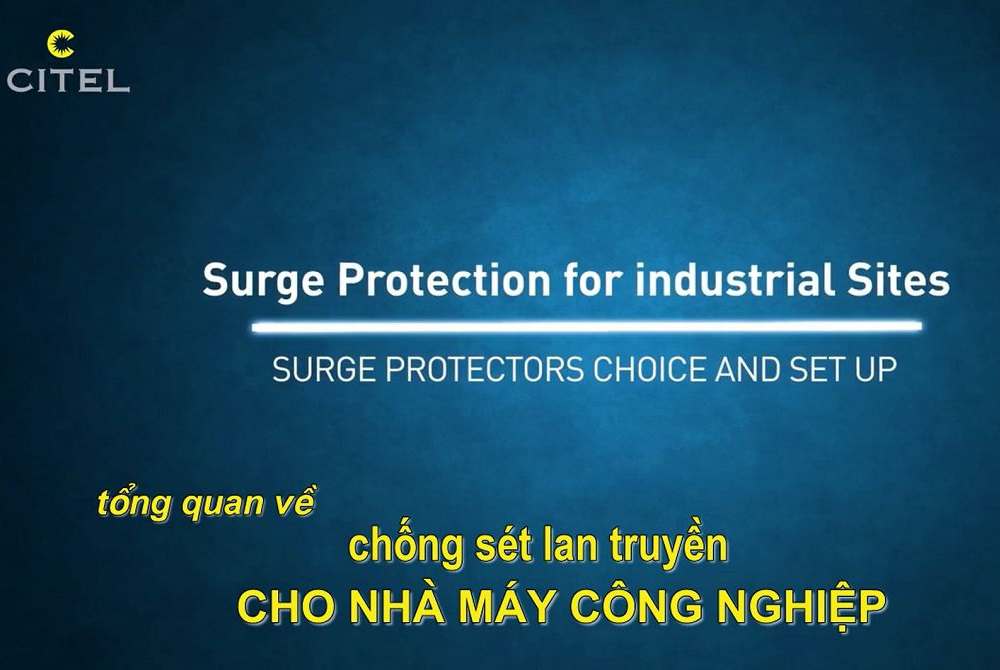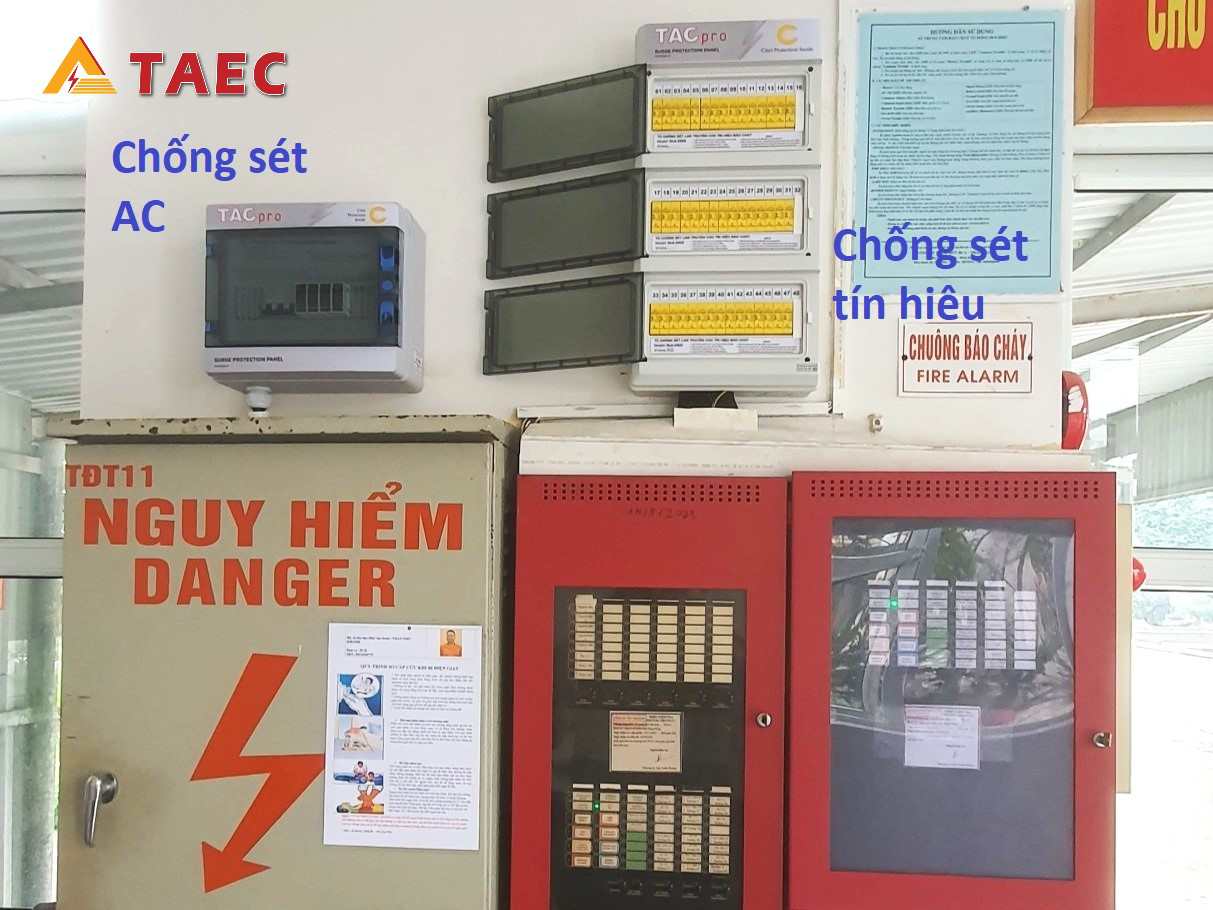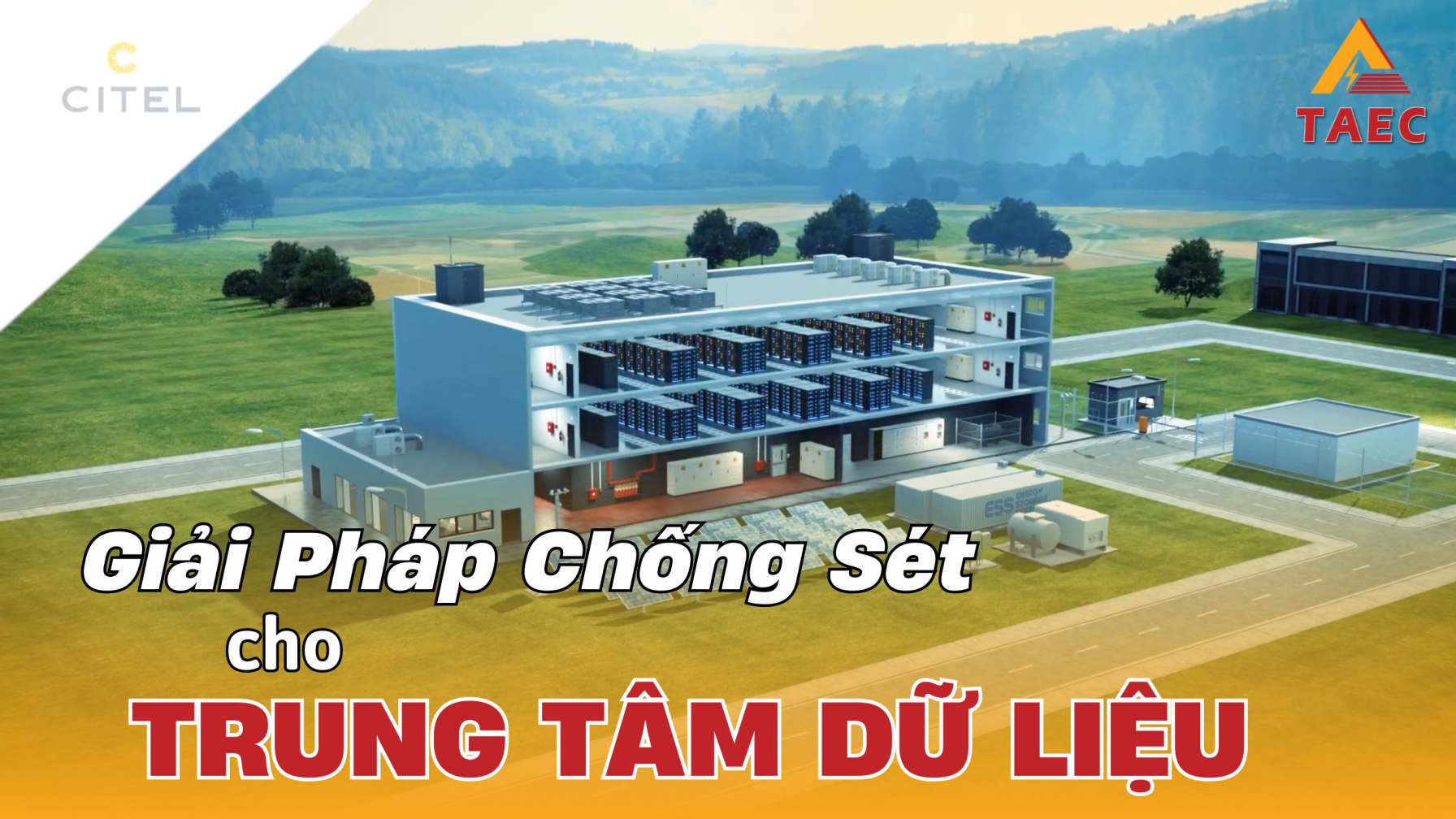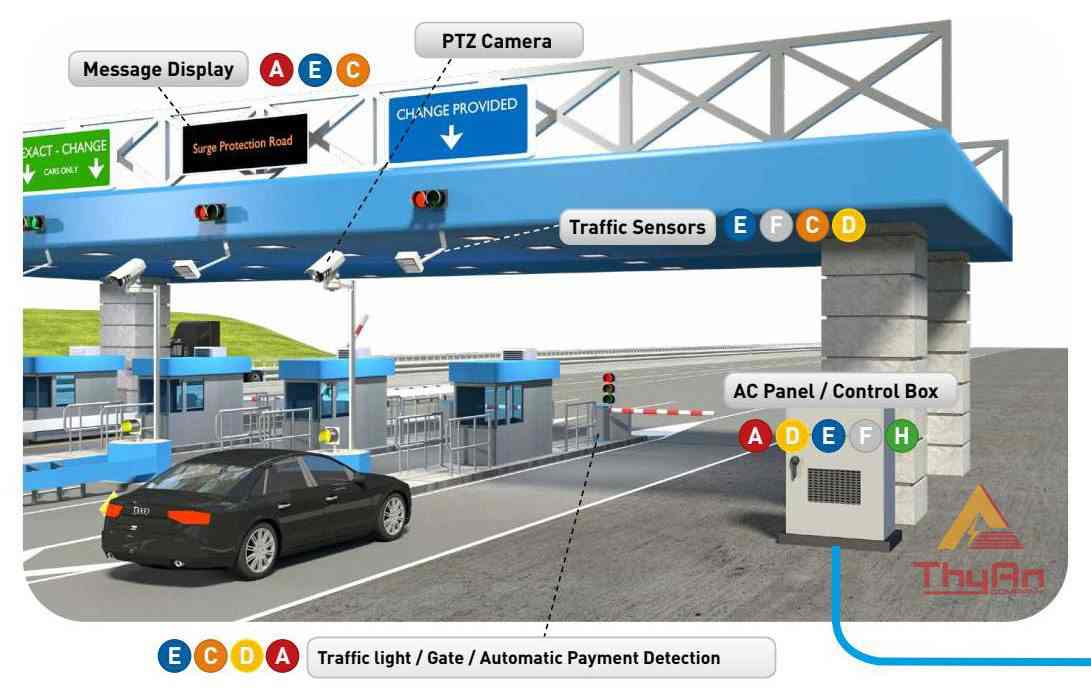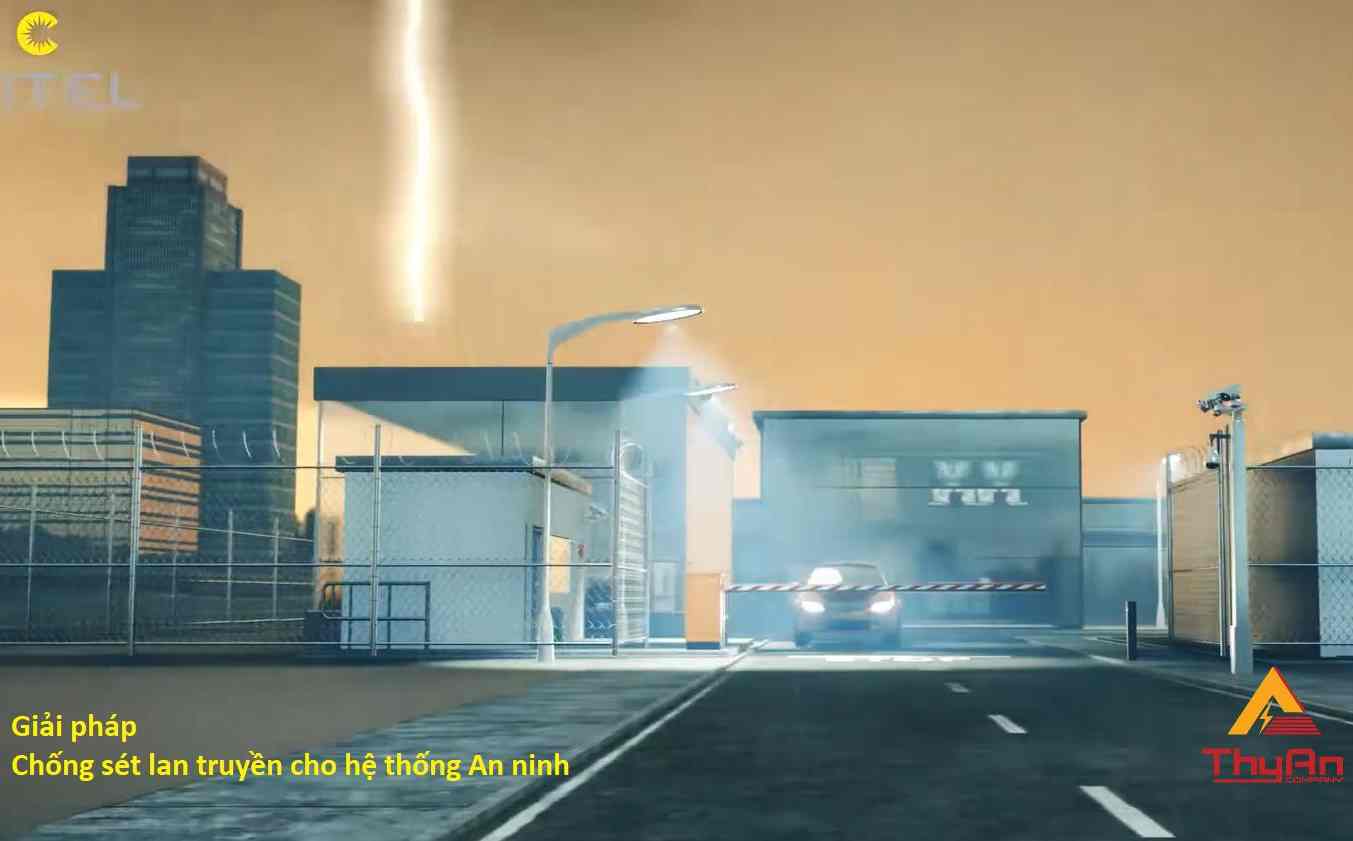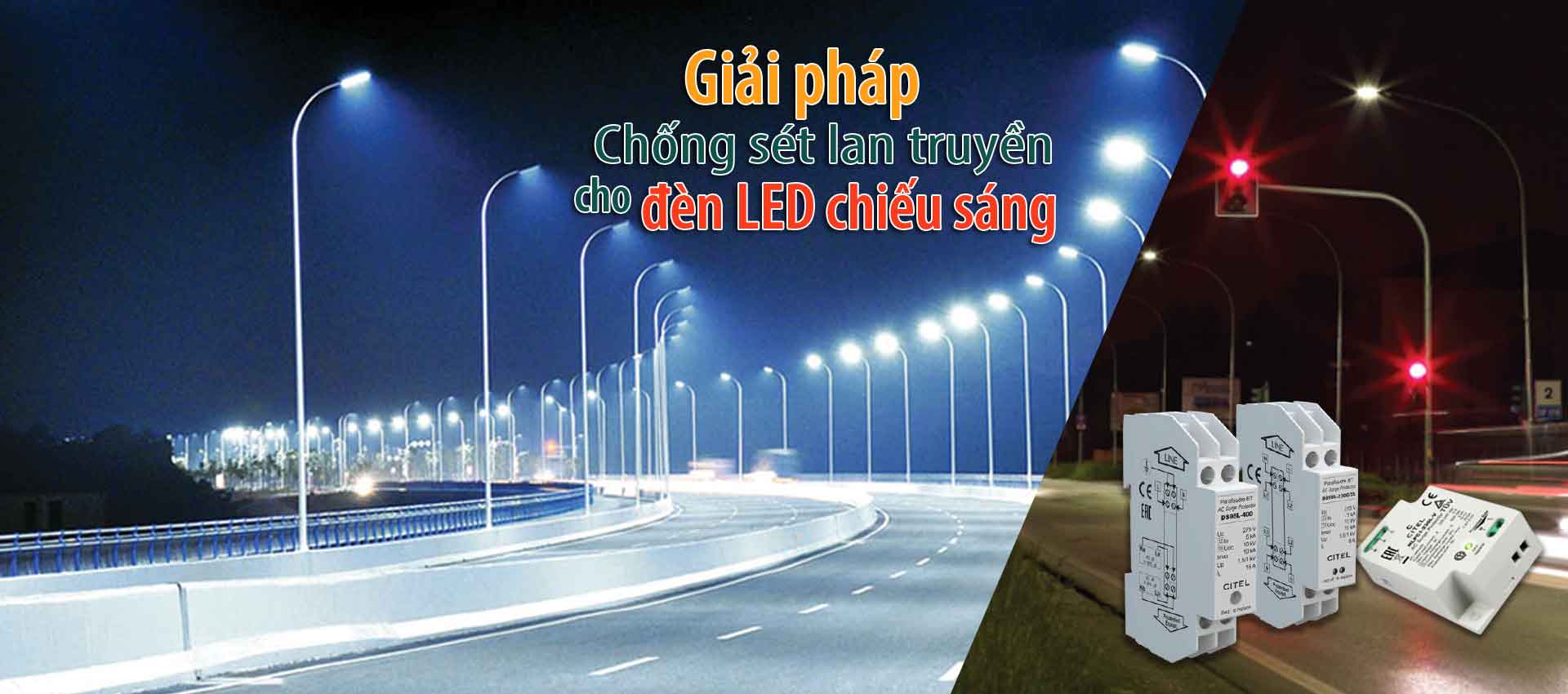Surge Protection for E-Mobility
SURGE PROTECTION OF ELECTRICAL VEHICULE INFRASTRUCTURES
EV infrastructure and Lightning Surges
As the Electrical Vehicles (EV) are now used in many countries and will become the major share of the automative market in the next future, their reliability and those of the charging infrastructure are now a big issue to consider. The availability and safety of the EVs and their related charging stations have been recognized as one of the key elements.
The vast majority of charging stations are connected to the electrical power grid and the risk of surge voltages, coming from lightning events or switching operations, flowing through must be absolutely considered.
Moreover, other types of transient voltages most be considered. As the switchnig surges (coming from switching operation on AC network) and ESD (electrostatic discharge). The EVs are regarded as a safe place to stay during thunderstorms because of their metal bodywork (principle of the Faraday cage) and the electronics isolated from the power grid are also relatively safe from hardware damage.
The conditions in charging situation change, as the vehicle electronics are now connected to the power grid, and transient voltages will be coupled into the vehicle via this galvanic connection and will come a major threat.
Risk of failure
Charging points and wall boxes generally withstand, depending on their location, overvoltages from 4 to 6 kV (Overvoltage categories III and IV), whereas EV, due to theirs embedded electronics, are rated at 2.5 kV (Overvoltage category II): this is often not sufficient to provide relevant safety in case of heavy surge voltages occurence.
As it can be seen in the figure below, because incoming surges are often exceeding these ratings, which means failures with undefined consequences for the connected vehicle electronics during an active charging process.
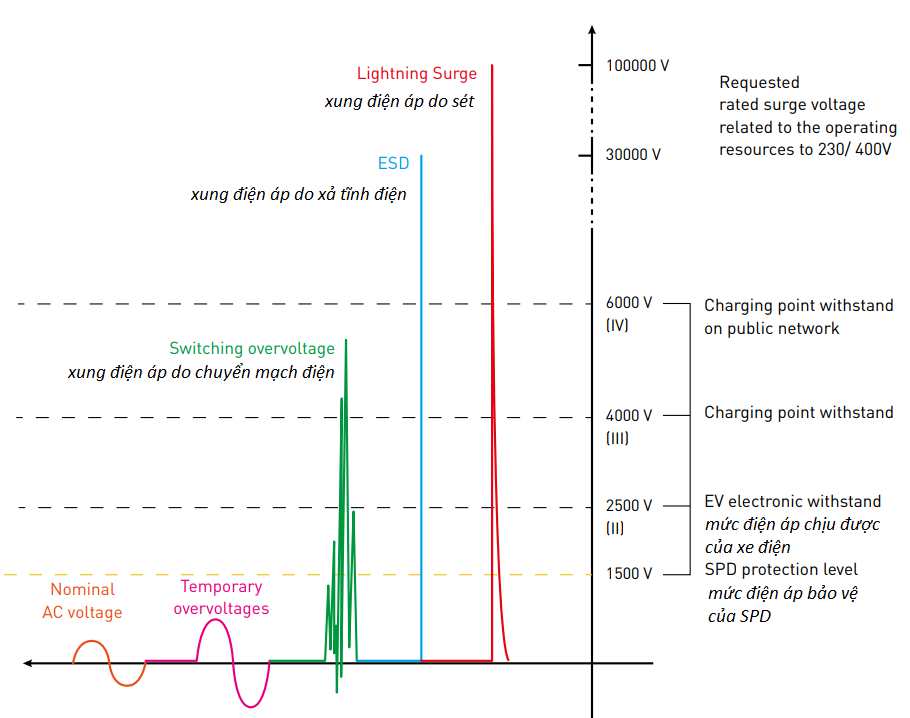
các dạng xung điện áp tác động đến trạm sạc xe điện
The Surge Protection Solution
The main advantage of surge protection devices (SPD), connected upstream the equipment, is that they work almost independently of the surge level: they will limit drastically the surge voltage under the voltage withstand of the equipment, avoiding by this way the failures.
Selection of the SPDs: Important for the selection is the surge discharge capability. Therefore, when selecting surge protection, attention should be paid to the SPD Type and to its installation situation. These criteria are defined in various standards and guides.
THE INTERNATIONAL STANDARDS FOR SURGE PROTECTION OF EV INFRASTRUCTURES
Existing international technical standards must be used in order to select the right SPD configuration and their relevant ratings.
IEC 61851-1
“Electric vehicle conductive charging system - Part 1: General requirements »
This standard is applicable for charging electric road vehicles ranging up to 1000 Vac or up to 1500 Vdc. It addresses all the requirements of security and sets up the operating conditions of the charging system (Charging Modes 1 to 4). It also defines the Overvoltage Categories (III and IV).
ISO 17409
“Electrically propelled road vehicles»
In addition to the IEC 61851 standard, this document defines the obligations to ensure safety to electrical vehicles, which should be rated with Overvoltage category II.
IEC 60364-7-722
“Requirements for special installations or locations - Supplies for electric vehicles”
This part of the IEC standards covers specific aspects for the power supply of electric vehicles on the low-voltage grid. The section 722.443 mentions the need for surge protection against transient overvoltages due to atmospheric influences or during switching operations. This is explicitly required for charging points in publicly accessible facilities
IEC 60364-4-443
“Protection against transient overvoltages of atmospheric origin or due to switching”
The section 4-443 of IEC 60364 is the basis for determining the need of surge protection for low voltage electrical systems in case of transient overvoltages due to atmospheric influences transmitted via the power supply network, and transient overvoltages due to switching operations.
IEC 60364-5-534
“Electrical Installations of Building Part 5: Selection and erection of electrical equipment - Section 534: Devices for protection against overvoltages”
The section 5-534 of IEC 60364 gives the needed information to select and install the right SPDs, in relation with the type of AC network, the external conditions and location. It defines the minimum rating of the main SPD parameters, as Protection Level (Up) and Discharge current (In or Iimp).
CHARGING INFRASTRUCTURE
Normatively, a distinction is made between 4 different charging modes, which are based on the IEC 61851-1 standard. These different charging modes describe various types of installation, depending on these modes the surge protection solution may change.
Charging mode 1

The electric vehicle is charged directly from the AC mains through conventional single-phase domestic sockets.
Charging mode 2
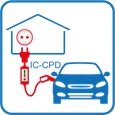
Here the electric vehicle is charged via a conventional single-phase domestic socket. The difference to charging mode 1 is the charging cable, which contains a control and protection device, a so-called In-Cable Control and Protecting Device (ICCPD).
For new installations, modifications and extensions of electrical systems, the presence of a residual current protection device in the infrastructure is mandatory. The communication that takes place also allows the state of charge to be checked.
Charging mode 3

The electric vehicle is charged via a permanently installed charging station. The charging power usually ranges from 11 kW (230/400V 3ph~ 16A) up to 43 kW (230/400V 3ph~ 63A). These charging stations are designed as wallboxes or charging stations.
Charging mode 4
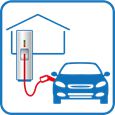
The electric vehicle is charged directly with DC current. The charging cable is permanently attached to the charging station. The charging power starts at 24 kW, but is often significantly higher (up to 350kW) and is connected to 3-phase AC power.
SPD SELECTION FOLLOWING CHARGING MODES
SPD for charging modes 1 and 2
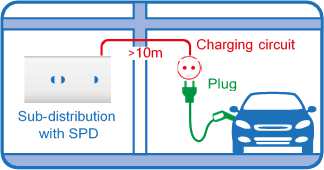
Charging modes 1 and 2 are connected to a single-phase AC network. As an electric vehicle is critical and expensive equipment, special care must be taken to ensure the highest level of safety.
So, in addition to the existing SPD inside the main AC panel (e.g. DAC50VG-11-275) a dedicated single phase SPD must be used close by the charging socket => DAC15CS-11-275
SPD for charging mode 3
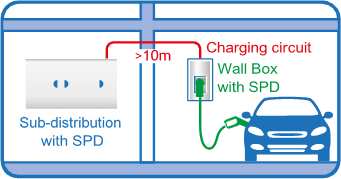
Mode 3 charging stations are mainly connected to a 3-Phase AC network. Long cable routes to the garage/wallbox require additional SPD, in addition to the primary one located in the main AC panel. This SPD could be installed with the wallbox, or inside if space available => DAC15CS-31-275.
note: some charging boxes could be already equipped with internal SPDs (see CITEL PAC range)
SPD for charging mode 4
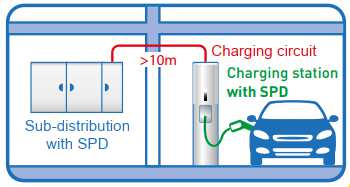
In this case, the Mode 4 charging stations are mainly located outside from an internal AC installation, the surge protectors are largely recommended and must be rated for the higher risk.
Due to the high surge risk and the very short distance between SPD and the sensitive equipment, an extremely efficient solution must be chosen: VG technology from CITEL is especially designed for this purpose and provides a Type 1+2+3 SPD solution. 3-Phase SPD should be installed inside the charging station, or in a dedicated panel if no room available =>DAC1-13VGS-31-275
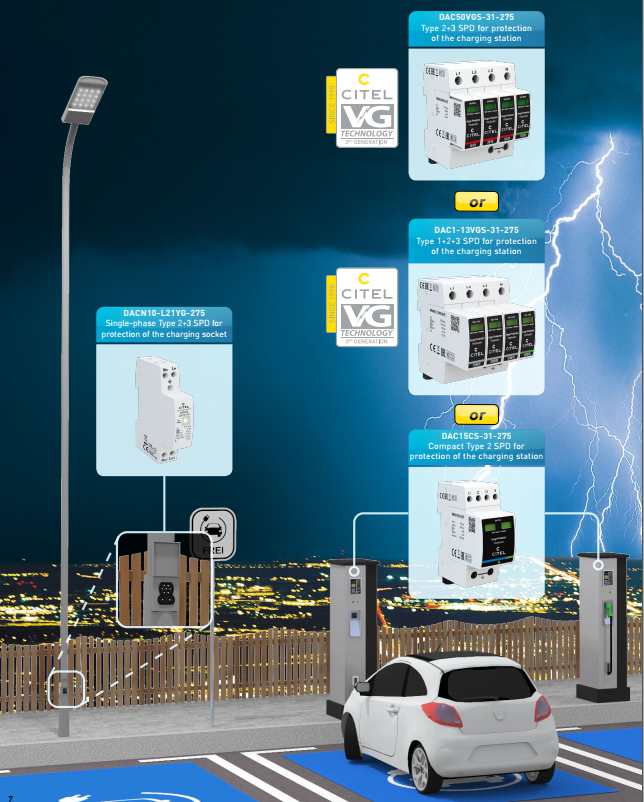
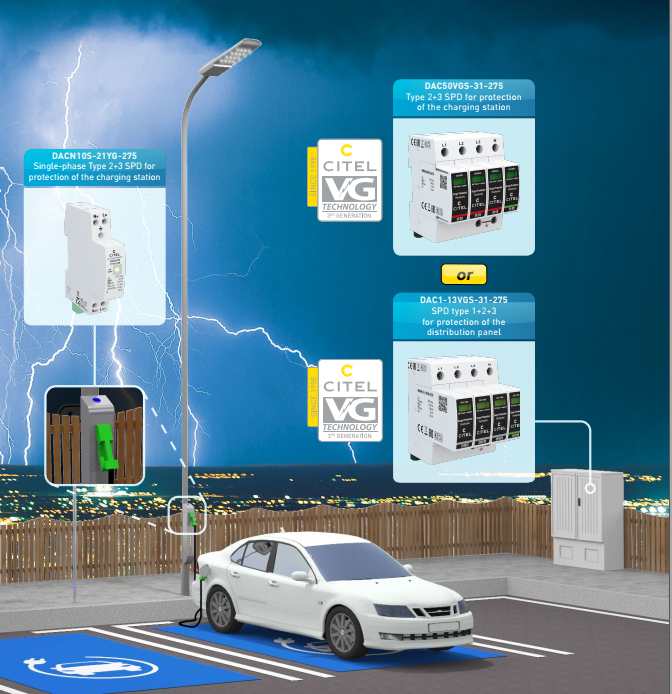
PRODUCT SELECTION FOR E-MOBILITY
MAIN ELECTRICAL PANEL

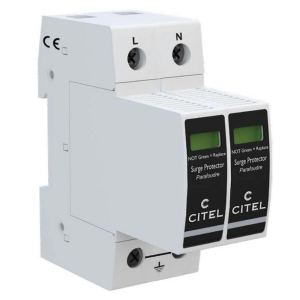
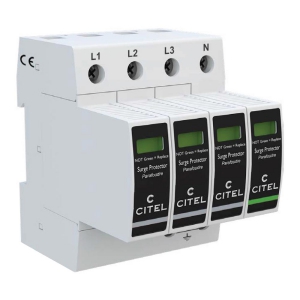
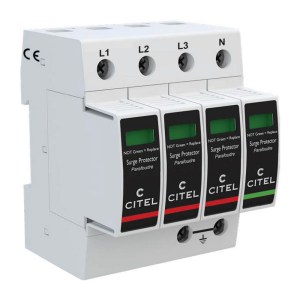
DAC1-13VG-20-275, DAC1-40GS-10-275, DAC50VG-31-275
The DAC1-13VGS is an extreme duty Type 1+2+3 AC surge protector device designed to protect an electrical installation located in a high lightning density area where the risk of heavy surge current or even direct strike is high.
The DAC50VGS surge protectors of Type 2+3 DAC50VG, are designed to protect the AC powerline at the main switchboard of the installation; this protection is fully adapted to the protection of the domestic main panel.
Equipped with the exclusive CITEL’s VG technology, these ranges achieve an improved protection level and a total absence of leakage current, guaranteeing a maximum protection efficiency, a simplification of use (no additional SPD required) and a maximum lifetime.
CHARGING TERMINAL
Wall Box - DIN Protection
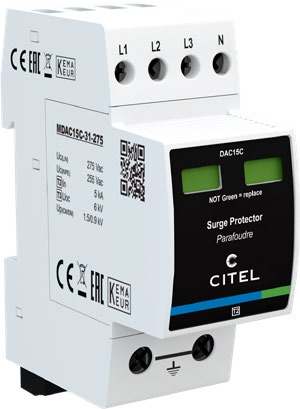
DAC15CS-31-275
The DAC15CS is the latest generation of surge protection from CITEL, it consists of the extremely compact and pluggable 3-phase.
The DAC15CS series, universally suitable for TN and TT networks, this space-saving type 2 AC surge protection is often installed in the wall box. In order to avoid interfering with the hardware of the wallbox, these SPDs can be installed in a small distribution box close to the wallbox.
Wall Box - Printed circuit board mounting
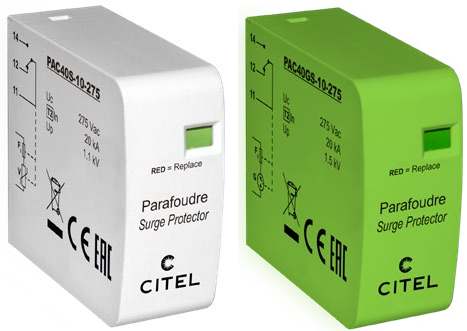
PAC40S-10-275 andPAC40GS-10-275
Especially designed for compact wall boxes, these Type 2 SPDs fit directly on PCB.
STREET LIGHTING CHARGING POINT
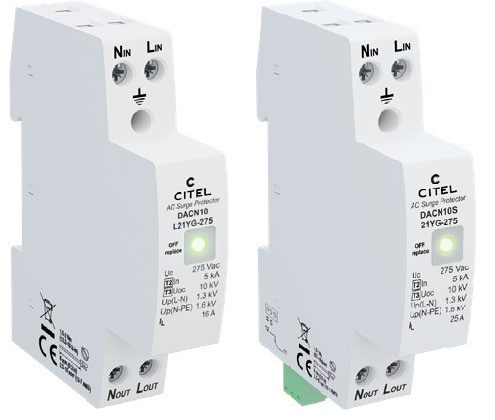
DACN10-L21YG-275 and DACN10S-L21YG-275
The DACN10 is the new CITEL’s series of compact monobloc AC surge protection. Extremely compact it can be installed in very small spaces such as the junction box.
DACN10 is equipped with an internal thermal safety which will disconnect the unit from the AC network in case of end of life. Unlike the DACN10, the DACN10-L incorporates an inline safety disconnection and double output connection.
Very easy to install, space-saving and equipped with a remote signal and LED on the front panel; the product offers easy installation and
maintenance.
Surge Protection for E-Mobility Video
Applicable products
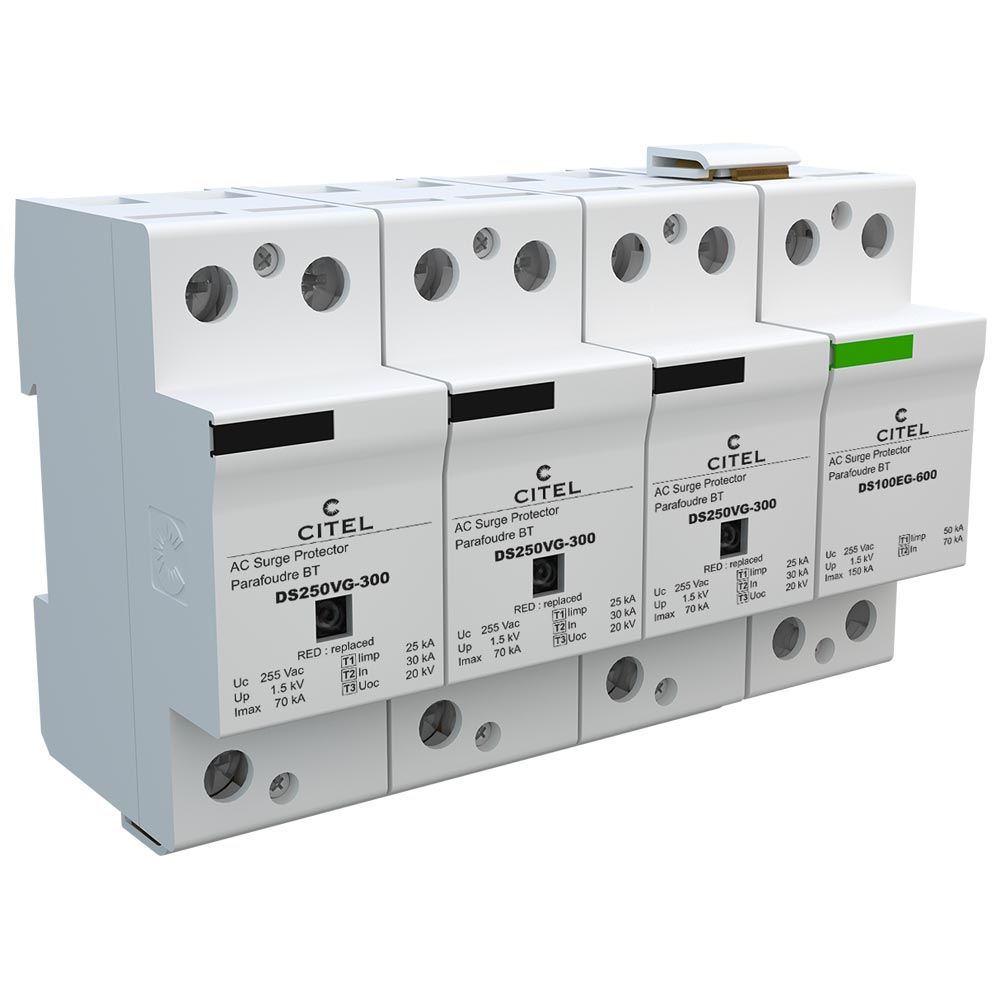
- Type 1+2+3 unipolar surge protector
- 25 kA on 10/350µs impulse
- Low voltage Up
- Internal disconnection, status indicator and remote signaling
- Optimized to TOV
- IEC 61643-11 and UL1449 ed.5 compliance
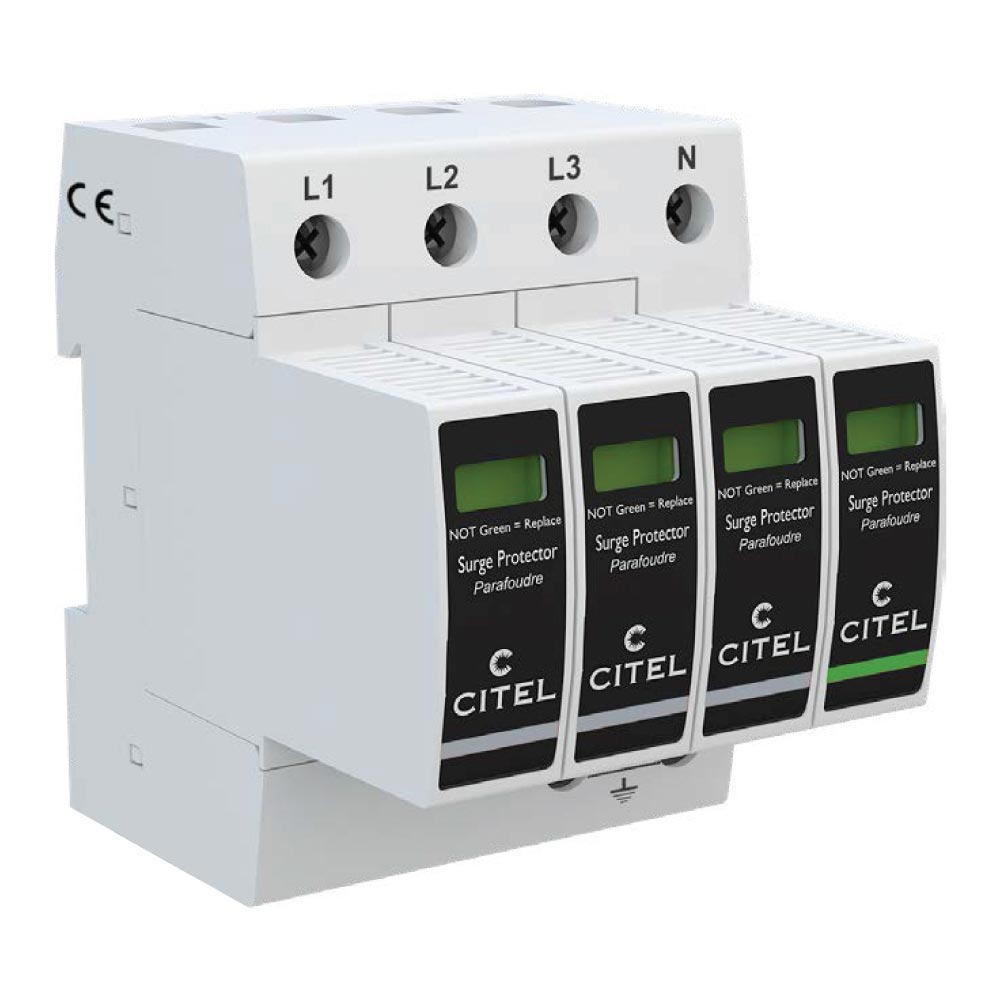
- Type 1 + 2 + 3 AC surge protector
- VG Technology
- Network: 230/400 V 3-phase+N
- In : 20 kA
- Iimp : 12.5 kA on 10/350µs impulse
- No leakage current
- Pluggable module for each phase
- Remote signaling (option)
- Optimized to TOV
- EN 61643-11, IEC 61643-11 certified
- UL1449 ed.5 compliance
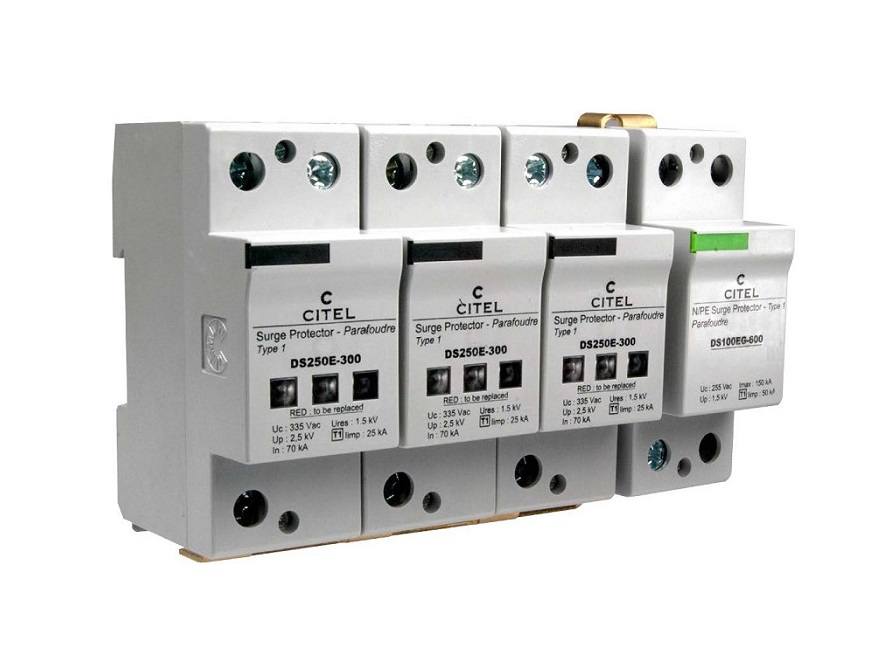
- Type 1 + 2 unipolar surge protector
- Iimp total: 100 kA on 10/350µs impulse
- Imax : 140 kA on 8/20µs impulse
- Internal disconnections, status indicators
- Remote signaling
- IEC 61643-11, EN 61643-11 and UL1449 ed.5 compliance
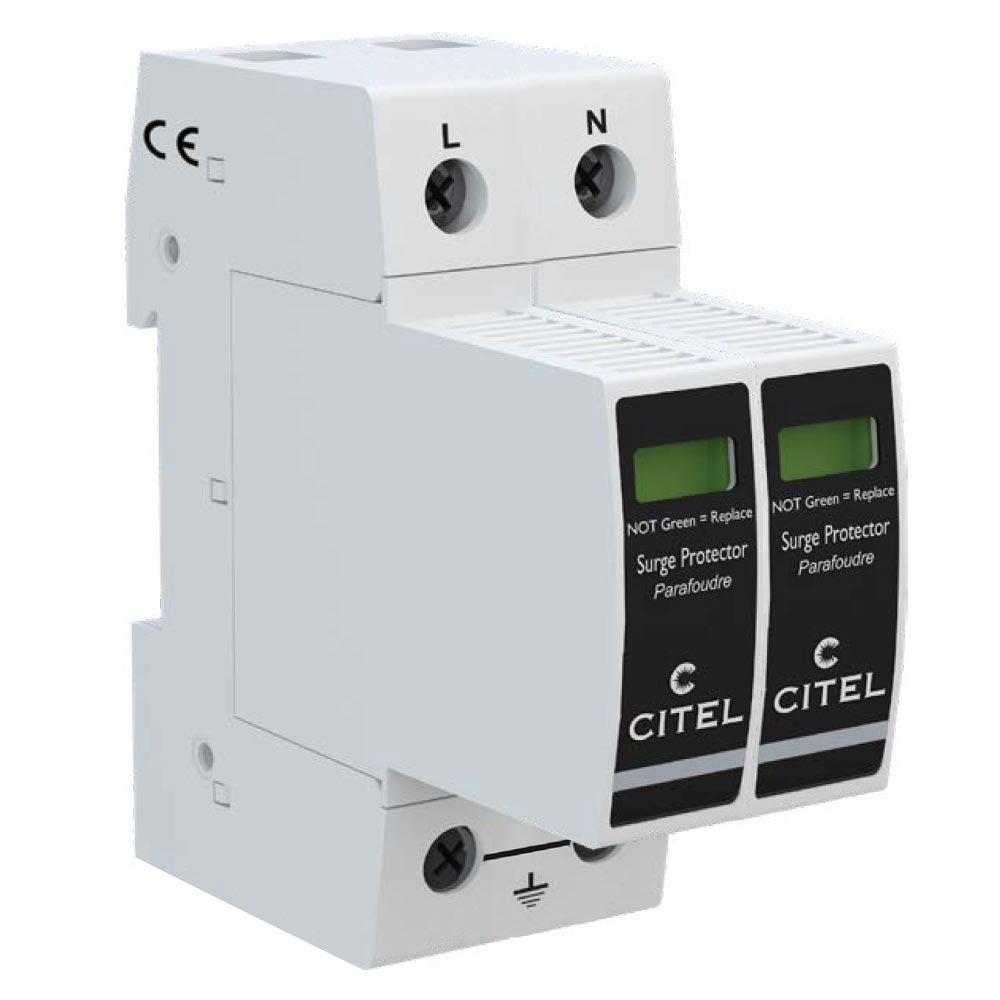
- Type 1 + 2 + 3 AC surge protector
- VG Technology
- Network: 230 V single-phase
- In : 20 kA
- Iimp : 12,5 kA on 10/350µs impulse
- No leakage current
- Pluggable module for each phase
- Remote signaling (option)
- Optimized to TOV
- EN 61643-11, IEC 61643-11 certified
- UL1449 ed.5 compliance

- Description: Type 2+3 AC surge protector - 3-phase+N
- Standards compliance: IEC 61643-11 / EN 61643-11 / UL1449 ed.5
- Certification: KEMA / EAC
- Technology: VG Technology (MOV+GSG)
- SPD configuration: 3-phase+Neutral
- Remote signaling of disconnection: option DAC50VGS-31-275: output on changeover contact
- Network: 230/400 V 3-phase+N
- AC system: TT-TNS
- Max. AC operating voltage: 275 Vac
- Residual Current: None
- Max. discharge current: 50 kA
- Total Maximum discharge current: 50 kA
- Admissible short-circuit current: 50 000 A
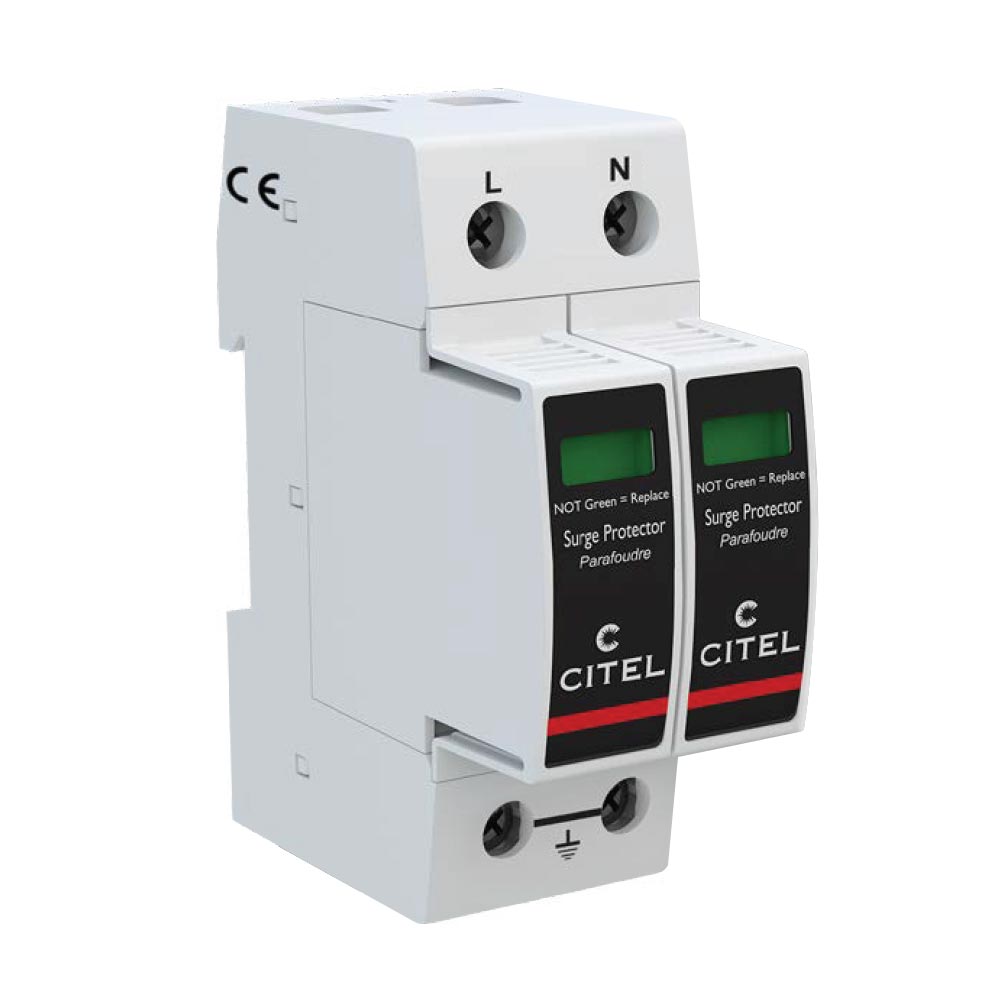
- Description: Type 2+3 AC surge protector - Single-phase
- Standards compliance: IEC 61643-11 / EN 61643-11 / UL1449 ed.5
- Certification: KEMA / EAC
- Technology: VG Technology (MOV+GSG)
- SPD configuration: Single phase
- Remote signaling of disconnection: option DAC50VGS-20-275 : output on changeover contact
- Network: 230 V single-phase
- AC system: TN
- Max. AC operating voltage : 275 Vac
- Residual Current : None
- Max. discharge current : 50 kA
- Total Maximum discharge current : 100 kA
- Admissible short-circuit current: 50 000 A
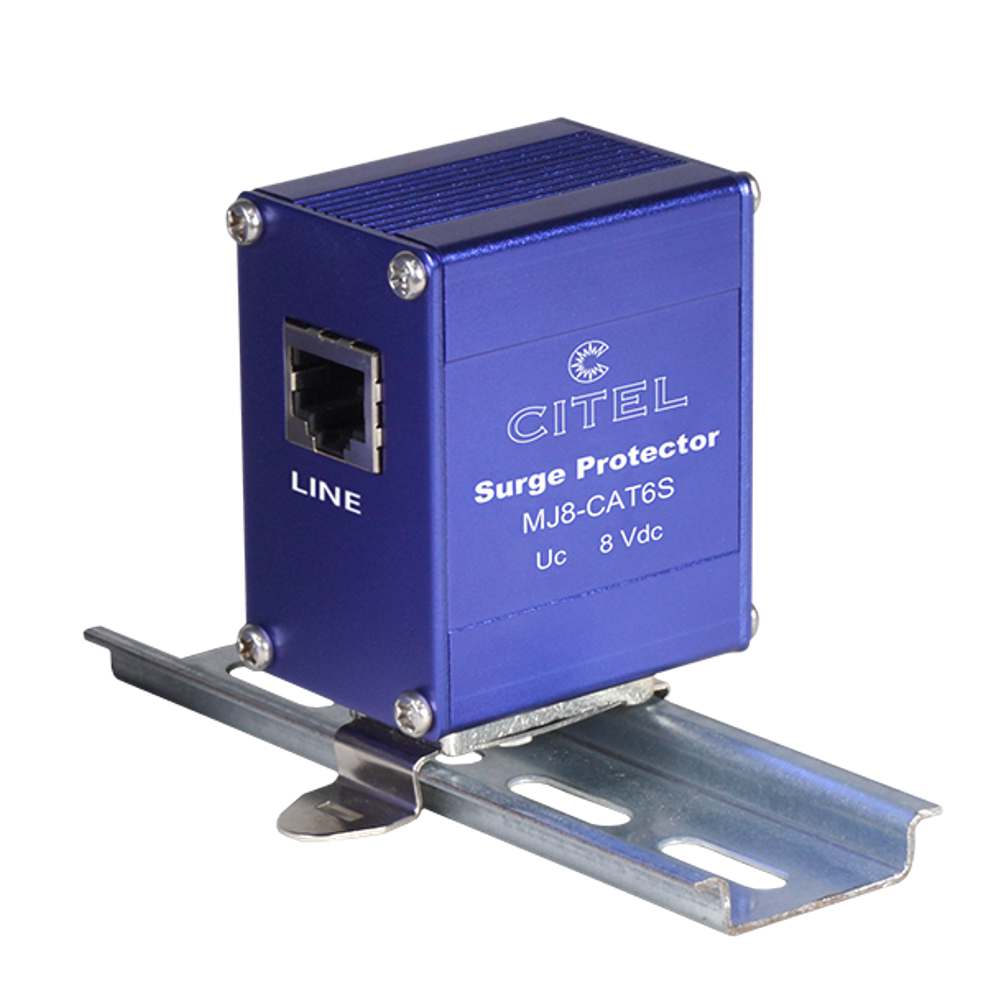
- Cat.5,5E and Cat.6 Surge Protector
- Hybrid GDT and Diode Technology
- 10/100/1000Mbps Compatible
- Bi-Directional Protection
- Shielded Connector Configurations
- DIN Rail, Screw Lug, and Flange Mounting
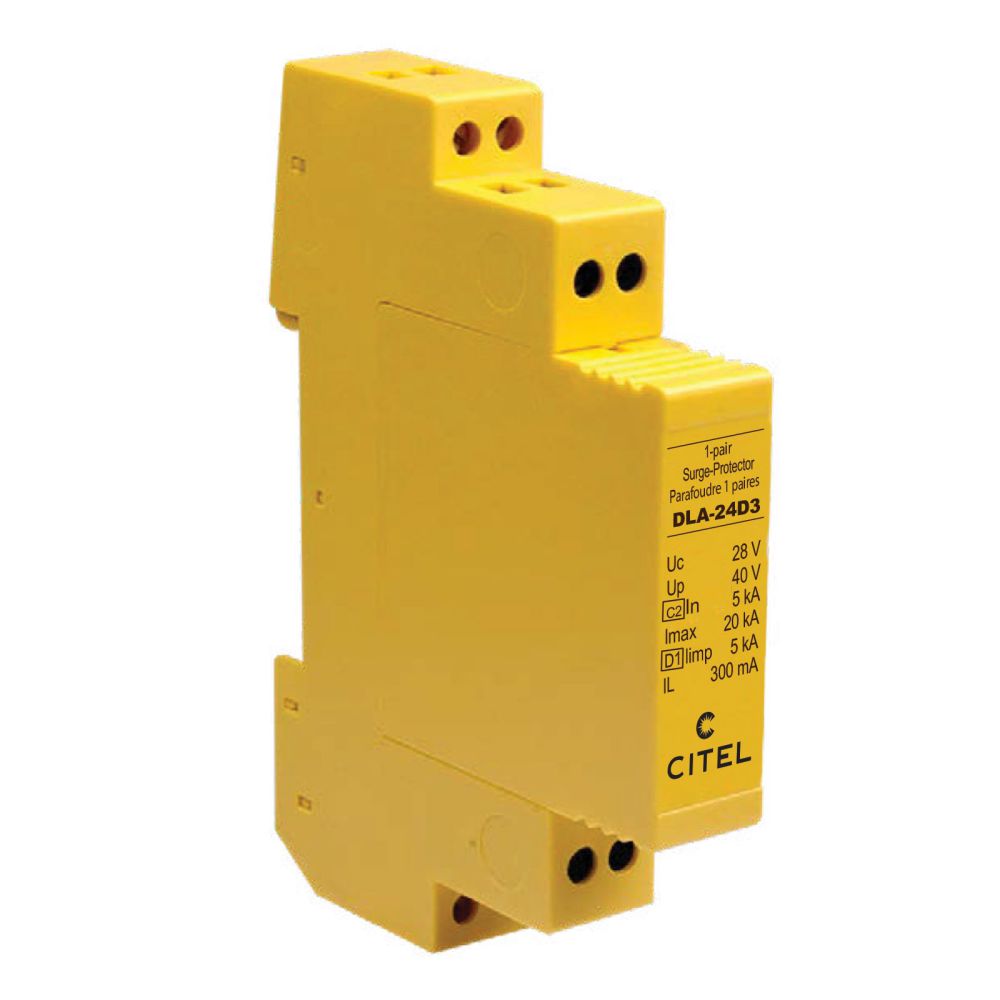
- Din rail plug-in surge protector
- 1-pair
- Un: 24 V
- Shield wire protection
- Without line cut-off
- IEC 61643-21 compliance
- UL497A
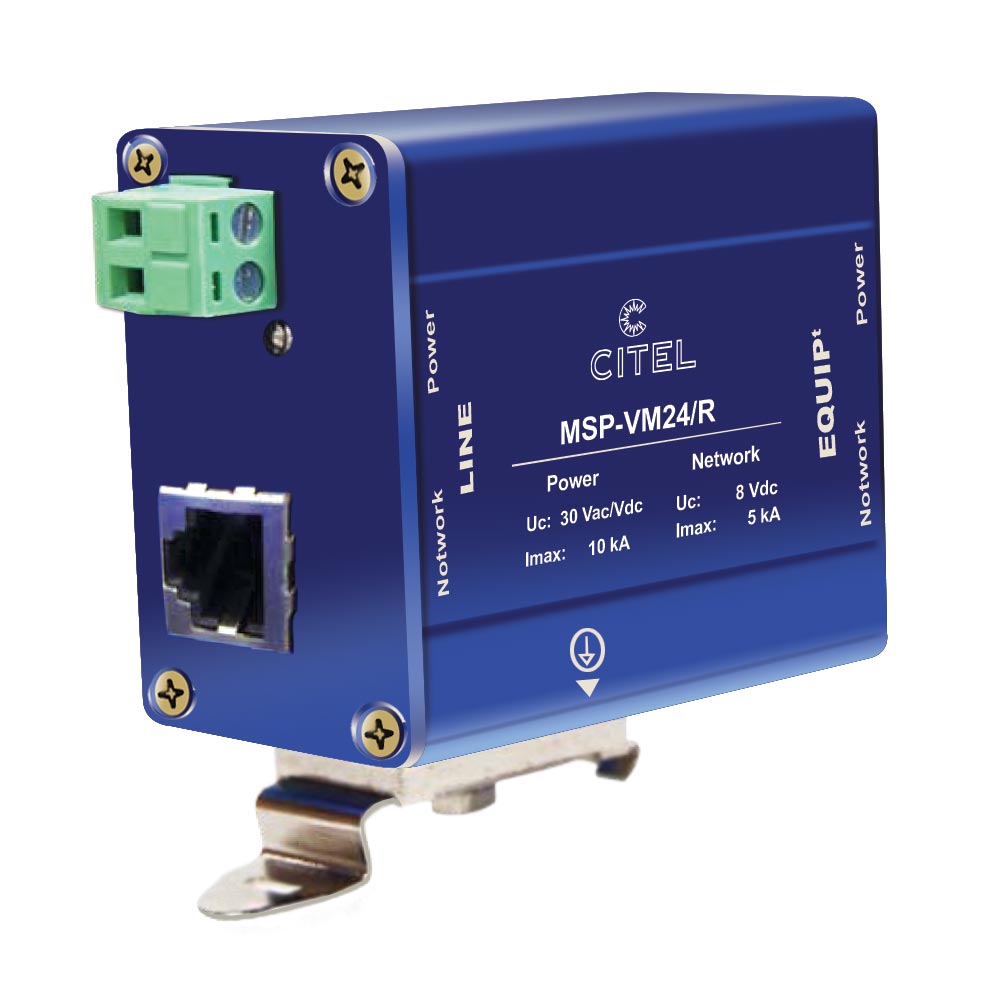
- Security camera Surge Protectors
- SPD type 2+3
- Compact aluminium housing
- Rail DIN mounting or plate mounting
- Protect: power + Cat.5 (connector RJ45) in single unit
- IEC 61643-21, IEC 61643-11 and EN 61643-21, EN 61643-11 compliance


